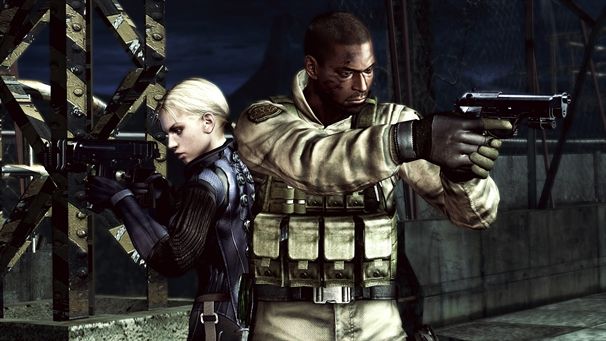Take a moment and think of some of the best-selling video games released in 2010. According to cnbc.com, the top ten games this year (in order from least to best selling) were Pokemon HeartGold, Mass Effect 2, Wii Sports Resort, Pokemon SoulSilver, God of War III, Wii Fit Plus, Final Fantasy XIII, Battlefield: Bad Company 2, Call of Duty: Modern Warfare 2, and New Super Mario Bros. Taking away the games with non-human lead characters (like God of War), and those with customizable characters (like Mass Effect), we are left with the four best-selling games of 2010. And of these four, all are presumably of Caucasian descent, and only one is female. And in fact, the protagonist of Final Fantasy XIII was originally designed to be male, and then only later changed to her final design.
So what is the reason for this under-representation of minorities as lead characters? First of all, it's probably fair to say that the world's population is about 50% female. It would make more sense, then, that about half of the population of video game characters would be female as well. And while this seems to be the case when factoring in supporting characters like NPCs, or alternatively playable characters, there is a significant lack of games with female leads. This statistic speaks to me with a question of causality: do games like the Call of Duty series sell best because of the apparently Caucasian male lead character, or did the developers design such a role because they thought it would appeal more to the target audience?
I am inclined to identify with the latter alternative. I do understand that my chosen example might not be exemplary; Call of Duty is a military shooter game, and as such the cast must be realistically predominantly male - though I won't go into a discussion of realism in video games. But on the other end of the spectrum, Team Fortress 2 is just about as cartoony and comedic as you can get. Valve clearly wasn't trying to design any role models, nor do the race and gender of each character have much of a bearing on storyline and gameplay; so it's puzzling that only one character out of the nine is a racial minority, and none are female, when the population of the United States (Team Fortress 2's target audience) is estimated to be about 34% minorities - about one in three.
I would like to take this opportunity to place a small disclaimer on this argument: I am not criticizing the games that are already out. I don't think these games are racist or discriminatory, nor do I think they should be boycotted, banned, or petitioned. Rather, my goal is to suggest that gamers be more aware of a problem that game producers seem to have overlooked. Additionally, I don't mean to imply that there are no games out right now that counter this argument. In Resident Evil 5, Sheva Alomar is both a female and a racial minority, as well as a main character. She also exemplifies all the classic character traits of a hero or heroine, and as such would be a fantastic role model. But here's the catch: Chris Redfield is also a great role model. And as a Caucasian male, he appeals to a wider range of the target demographic for games like Resident Evil 5. Also, in my experience, even many female gamers (such as myself) find themselves looking up to male and female characters alike.
So after examining all sides of the issue, what it all boils down to is that video game companies first are foremost are businesses; they want their games to sell, so they try to appeal to the statistical majority of their target market: American 18-34 year old males, predominantly of Caucasian descent. But I believe that with the U.S.'s changing, diversifying culture, games marketed here should also make their cast of characters more diverse.
Sources:
"The Best Selling Video Games of 2010"- Accessed August 16, 2010
"Demographics of the United States" - Accessed August 16, 2010


